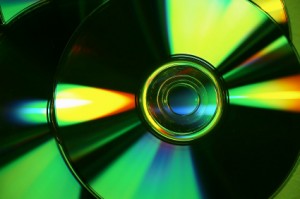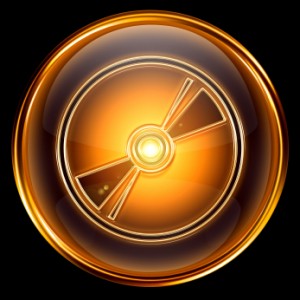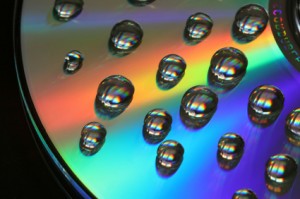With society’s growing occupation with ‘going green’, people are starting to ask what the bulk DVD duplication industry can do to help the cause. Thus the half-thickness ‘green’ DVD, or ‘EcoDisc’, was invented.
Just like a normal disc, this DVD can store audio, visual and text information on it, yet unlike the standard disc it comes at only half the thickness (0.6mm instead of 1.2mm), using less resources in its creation and saving on plastic, emissions and thus allowing the bulk DVD duplication industry to help the environment. This effect is created because a normal disc is two separate halves glued together, while the EcoDisc has only one half, no glue and special clamps and rings to assist the disc player in clamping it properly. The absence of the adhesive used in normal discs is another environmental plus, as the glue gives off toxic fumes.
But do these EcoDiscs actually work?
So far, the bulk DVD duplication centers manufacturing these discs have been keeping quiet about which discs exactly are EcoDiscs so it is quite hard to tell, but several magazines have given away EcoDiscs as free gifts and some consumers had issues getting them to work in ordinary disc players. The half-thickness can seriously compromise the disc player and a disc can become stuck in a player which does not have an ejecting disc-drawer (like the ones you normally find in cars or in mac computers).
Aside from this, the much of the bulk DVD duplication industry is up in arms: They claim these discs are a serious compromise of DVD standards and licensees have been notified that manufacturing sub-standard discs will cause them to have their licenses taken away.
So while the verdict is still out on half-thickness DVDs, the evidence is not looking promising for them! While I agree that going green is all for the good, we need to make sure that the products created in this cause should be fully tested and work very well in all circumstances before they are put out onto the market!
Archive for the ‘New Technology’ Category
Green half-thickness DVDs – as good as they say?
Friday, July 30th, 2010Lightscribe Technology – is it as good as all the hype is making out?
Thursday, May 6th, 2010Some years ago, Hewlett Packard became increasingly frustrated with its own home-CD-printing software: It was a hassle to print out and stick labels on CDs and it was very easy to get it wrong! So their developers began to come up with a new plan; why not use a laser to etch the CD label onto the disc instead?
The technology to achieve this was developed, dubbed Lightscribe Technology, and software and etching devices were unleashed onto the market. Lightscribe has been a massive success so far, allowing consumers to produce professional-looking CD labels at home by etching labels onto discs rather than printing and sticking.
But how does this new technology work? Allow me to explain; First, there is the Lightscibe drive, a disc-drive which etches your CD label design onto your CD. To use one of these drives, you must have compatible media (Lightscribe-printable CDs are very clearly labelled and available on the internet with a quick search-engine check) and the appropriate software installed to your computer. Hook the Lightscribe drive up to your computer and away you go!
The drive itself works by using the same kind of laser that burns CDs to engrave an etched image of your CD label onto the front of your disc. However, it has a ‘control feature zone’ which not only allows it to take in the full dimensions of your disc, but also means that every time you insert the disc, it begins printing in the same place again. this means you can print multiple times on the same disc, adding a title or extra image if you wish. It is no problem if you forget something: You can always just insert it later on!
While this breakthrough is a marvelous development, it does come with some drawbacks; it takes a very long time to etch a CD label onto even one disc – up to thirty minutes, dependent on how complex your design is! – while printing and sticking usually takes between three and five. Also, while thermal and inkjet printing allow for variants in colour, Lightscribe is simply monotone.
However the quality of the CD label is guaranteed to be superb and the etching effect does look incredibly professional: Much more so than a CD marker pen!
And bear in mind that this is very new technology: Developers have a lot of time to work on improving the current model and fixing the problems that have occurred in it. And, as always, the more we as consumers invest in a product, the further the product will develop over time!n
Water-Resistant Disc Printing
Thursday, May 6th, 2010Once you get involved in CD label printing you begin to realise that most users favour the inkjet printed labels for their vibrant colours and the fact that they print directly onto the disc. However it does not take long to discover the frustrations of printing inkjet labels and then smudging them! Be it a sweaty finger picking one up carelessly or a spot of rain as you pull the disc out of your pocket to hand it to a colleague, one of the reasons thermal printing has been so much more popular than inkjet is that it simply does not smudge!
BUT developers have come up with new water-resistant discs which can be printed on, left to dry, and do not smudge under any watery-duress. The technology had been dubbed WaterShield and was created by Taiyo Yuden, the inventor of recordable discs.
The discs work by having a specialised printing surface which makes the ink dry very quickly on CD labels and locks it in place, stopping it from smearing and smudging. There are two kinds of water-resistant disc currently on the market, the aforementioned WaterGuard by Taiyo Yuden and Primera and the AquaGuard brand also sold by Primera. Both Primera brands are sold under the label ‘Tuffcoat’.
But which type works better? And what is the cost effect of buying these specialised discs?
To begin with the pricing; it is possible now to get reasonably good quality discs for inkjet printers at about 30p each without shopping around too much. WaterShield and Aquaguard discs come out at about 5-10p more however they can be used in an ordinary inkjet printer so no extra cost is inflicted there!
To determine which brand works better, each one has its own pros and cons. Both work excellently well at not smudging: A damp thumb does not effect them, nor a running tap on cold or hot. It is not until you boil them that you notice any difference at all (and frankly anyone boiling their CDs is probably not that interested in playing them again!) Once boiled, both discs exhibit some almost irrelevant bleeding. The WaterShield discs, which have a glossy finish to them once printed, begin to turn slightly blue when boiled, but I feel the extreme drawback is made up for by the professional-looking finish of the gloss CD label. The AquaGuard remains matt but also does not turn a hint of blue when boiled.
So, it appears that developers have solved the problem of inkjet CD label printing: No more smudges for a little extra cost!


